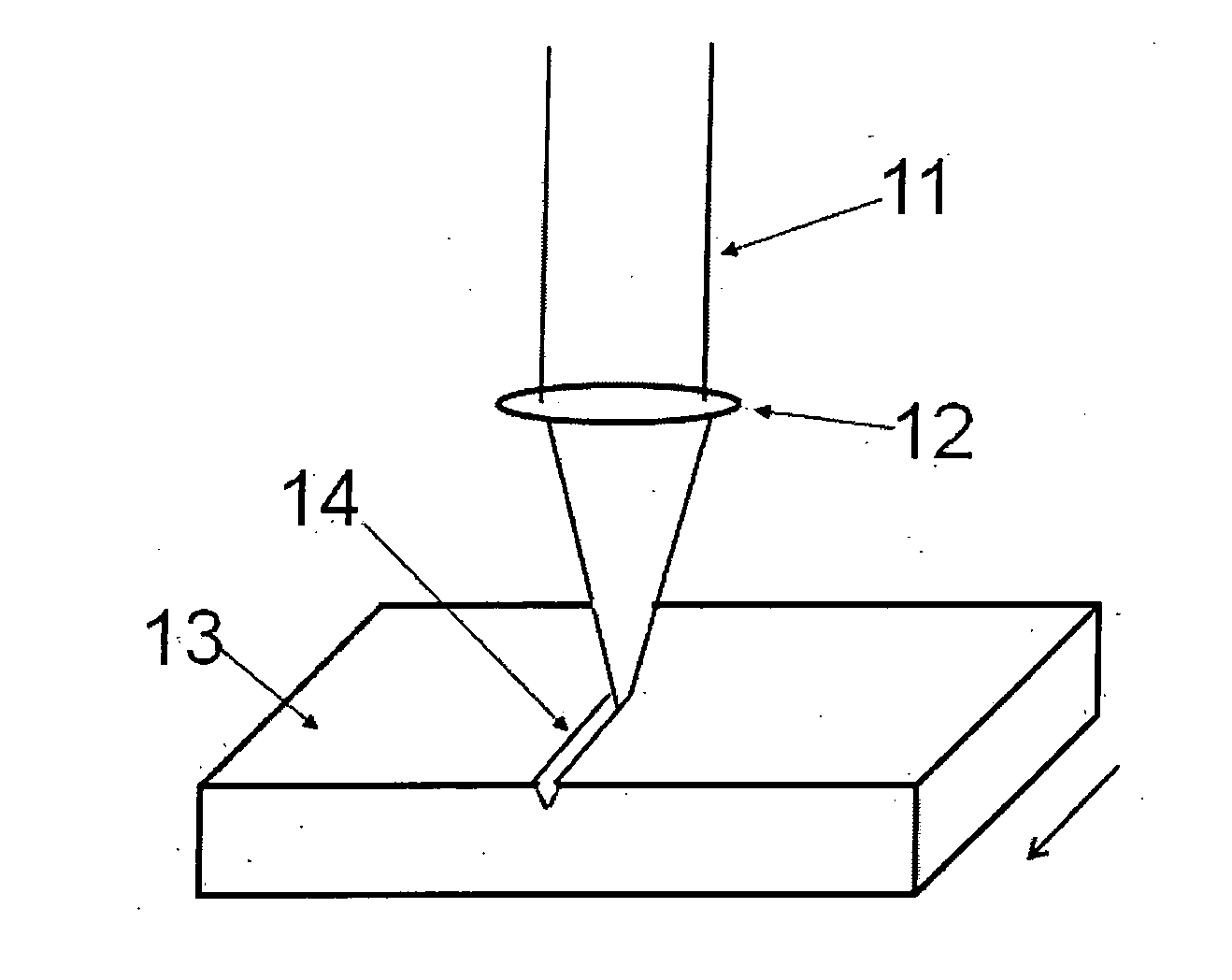Method and apparatus for laser machining relatively narrow and relatively wide structures
a laser machining and structure technology, applied in laser beam welding apparatus, laser printed circuit aspects, electrical apparatus, etc., can solve the problems of reducing the efficiency of laser machining, affecting the accuracy of laser machining, so as to achieve the effect of increasing the energy density
- Summary
- Abstract
- Description
- Claims
- Application Information
AI Technical Summary
Benefits of technology
Problems solved by technology
Method used
Image
Examples
Embodiment Construction
[0054]FIG. 1
[0055]FIG. 1 illustrates a process whereby a first laser beam is used to create fine grooves in the surface of a substrate 13. Laser beam 11 is of high quality having diffraction limited or close to diffraction limited properties. Lens 12 focuses the laser beam onto the surface of the substrate 13 to create a small spot. The energy absorbed causes the substrate material in the region of the focal spot to be vaporized. The laser beam is moved over the substrate surface so that a groove 14 is formed. A straight groove 14 is shown in the figure but in practice grooves can be of any shape set by the motion of the beam with respect to the substrate 13. Grooves can be of any length set by the limits of the mechanism that moves the beam with respect to the substrate. If the laser used is of CW type, then the depth of groove formed will be of uniform depth along its length so long as the laser power, beam size and speed are held constant. If the laser used is of pulsed type, the...
PUM
| Property | Measurement | Unit |
|---|---|---|
| wavelength | aaaaa | aaaaa |
| width | aaaaa | aaaaa |
| width | aaaaa | aaaaa |
Abstract
Description
Claims
Application Information
 Login to View More
Login to View More - R&D
- Intellectual Property
- Life Sciences
- Materials
- Tech Scout
- Unparalleled Data Quality
- Higher Quality Content
- 60% Fewer Hallucinations
Browse by: Latest US Patents, China's latest patents, Technical Efficacy Thesaurus, Application Domain, Technology Topic, Popular Technical Reports.
© 2025 PatSnap. All rights reserved.Legal|Privacy policy|Modern Slavery Act Transparency Statement|Sitemap|About US| Contact US: help@patsnap.com



